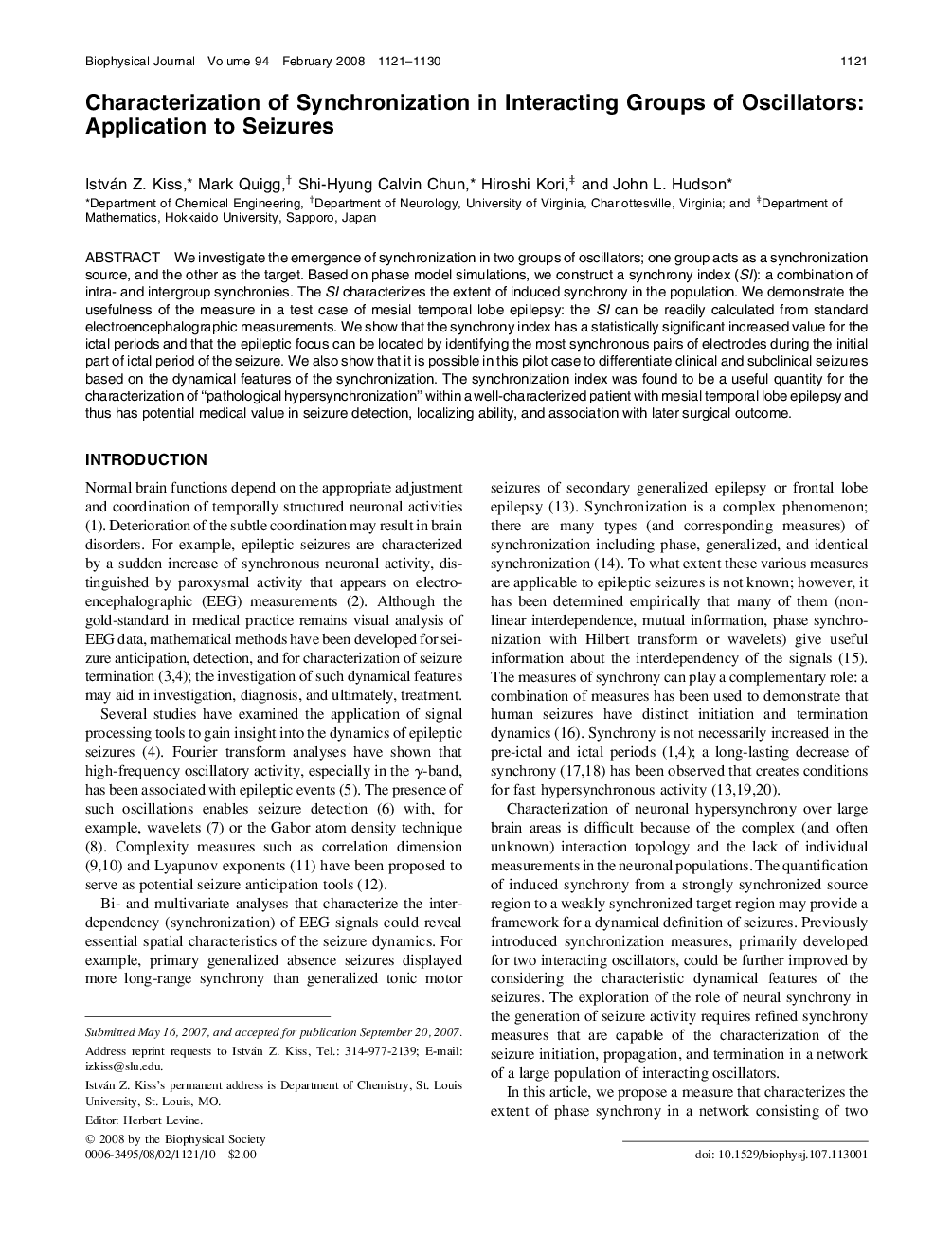| Article ID | Journal | Published Year | Pages | File Type |
|---|---|---|---|---|
| 1955266 | Biophysical Journal | 2008 | 10 Pages |
We investigate the emergence of synchronization in two groups of oscillators; one group acts as a synchronization source, and the other as the target. Based on phase model simulations, we construct a synchrony index (SI): a combination of intra- and intergroup synchronies. The SI characterizes the extent of induced synchrony in the population. We demonstrate the usefulness of the measure in a test case of mesial temporal lobe epilepsy: the SI can be readily calculated from standard electroencephalographic measurements. We show that the synchrony index has a statistically significant increased value for the ictal periods and that the epileptic focus can be located by identifying the most synchronous pairs of electrodes during the initial part of ictal period of the seizure. We also show that it is possible in this pilot case to differentiate clinical and subclinical seizures based on the dynamical features of the synchronization. The synchronization index was found to be a useful quantity for the characterization of “pathological hypersynchronization” within a well-characterized patient with mesial temporal lobe epilepsy and thus has potential medical value in seizure detection, localizing ability, and association with later surgical outcome.
